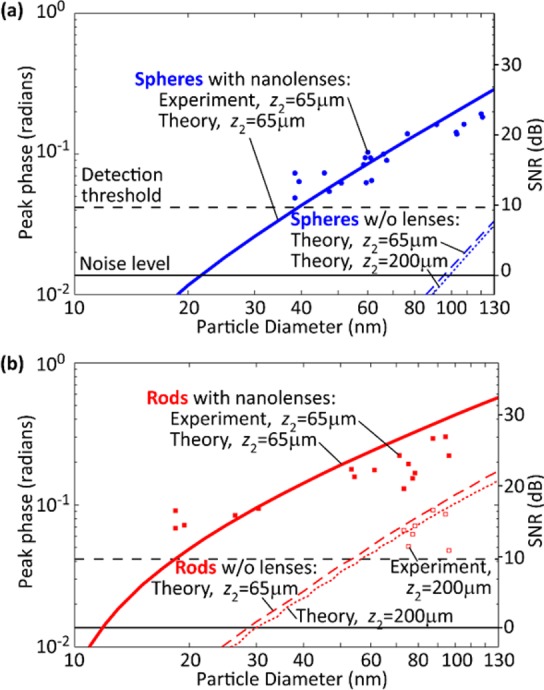Figure 4.

Experimental and simulated signal levels of nanoparticles with and without vapor-condensed nanolenses. (a) Spheroidal polystyrene particles. Vapor-condensed nanolenses raise the nanoparticle signal levels above the detection threshold. The solid blue line was determined using the vapor density as a fitting parameter, with value of 3.6 × 1015 molecules/m3. The blue dashed lines used no fitting parameters. For 40 nm particles, there is ∼50-fold improvement in signal level for particles with nanolenses compared to those without. The root-mean-square noise level was measured experimentally in several experiments and found to be ∼0.014 radians. The empirically determined detection threshold is set at 3 times the background noise level, which also corresponds to what a human observer can reliably discern relative to background fluctuations. (b) Rod-shaped carbon nanotubes. The minimum detectible diameter (D) is smaller for rod-shaped particles than for spheroidal particles. The larger carbon nanotubes are experimentally detectable without nanolenses. Their signal values agree well with theoretical predictions. No fitting parameters were used in this panel; the solid red line uses the same vapor density as in (a).
